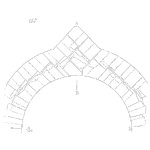
This is part of a short series on the common life data distributions.
The Lognormal distribution is a versatile and continuous distribution. It is similar to the Weibull in flexibility with just slightly fatter tails in most circumstances. It is commonly used to describe time to repair behavior. This short article focuses on 7 formulas of the Lognormal Distribution.
If you want to know more about fitting a set of data to a distribution, well that is in another article.
It has the essential formulas that you may find useful when answering specific questions. Knowing a distribution’s set of parameters does provide, along with the right formulas, a quick means to answer a wide range of reliability related questions. [Read more…]













